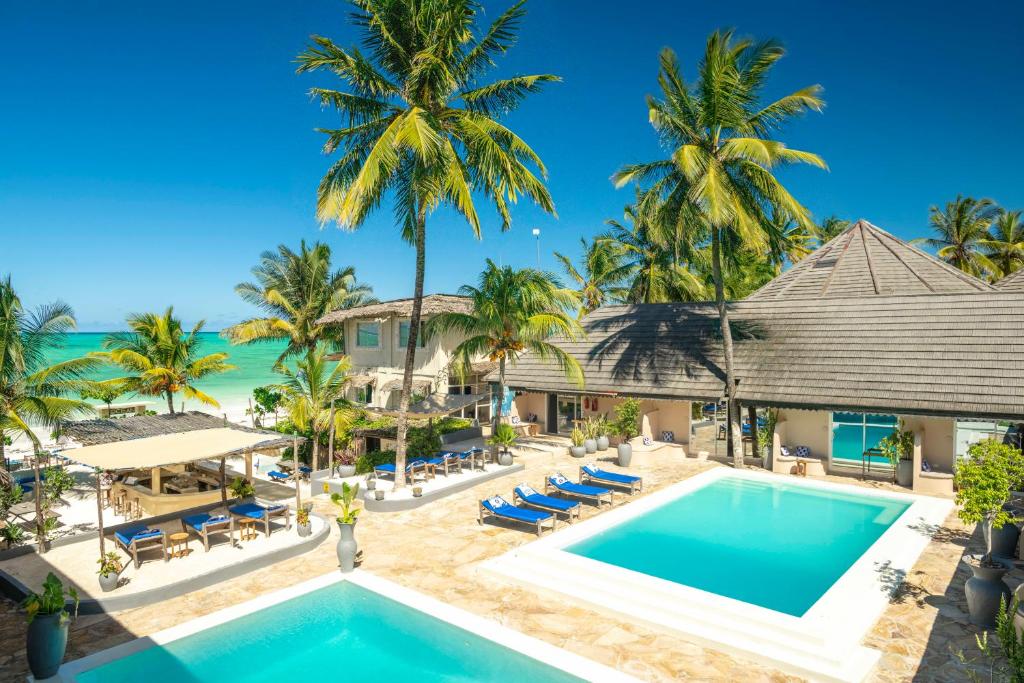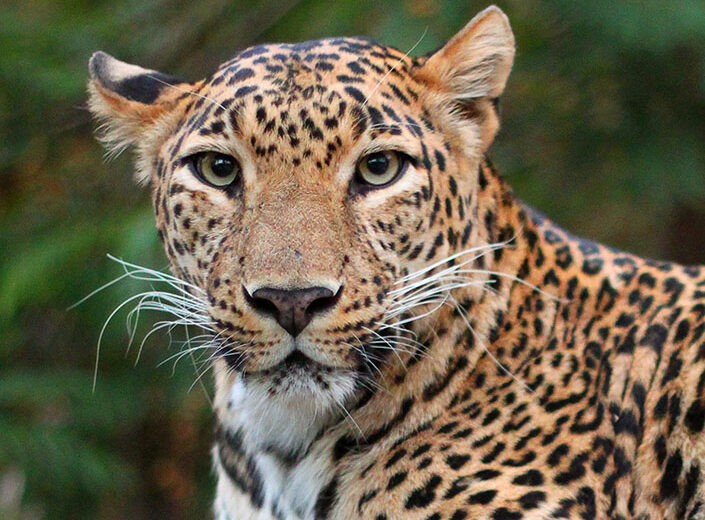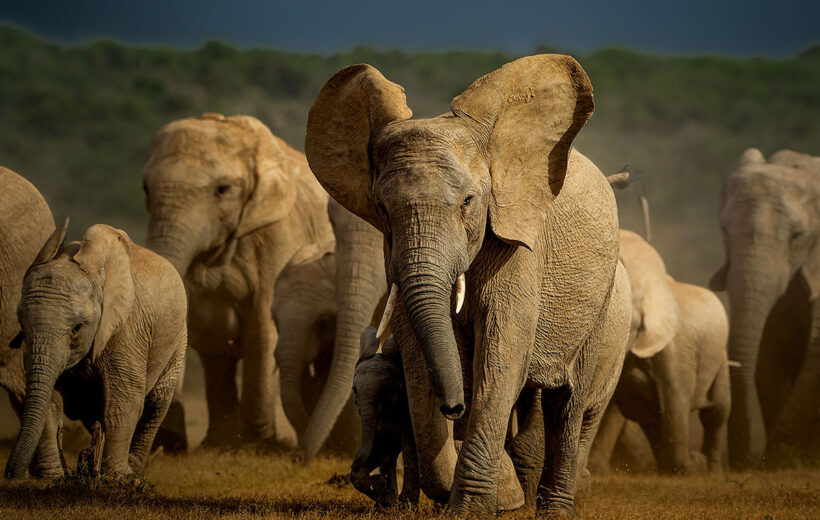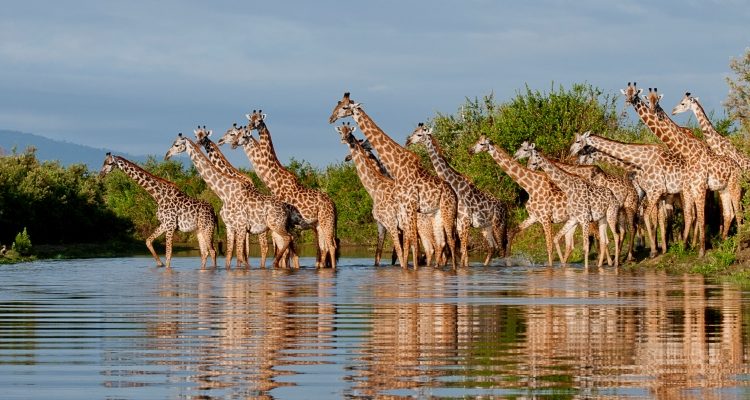Paje Beach
Paje Beach
Paje Beach, located on the southeast coast of Zanzibar, Tanzania, is a stunning destination known for its pristine white sands, turquoise waters, and relaxed atmosphere. It's a popular spot for beach lovers, water sports enthusiasts, and those seeking a more laid-back and authentic experience. Here's an overview of what you can expect at Paje Beach:

Key features of Paje Beach
-
-
Scenic Beach: Paje Beach boasts a wide stretch of soft, powdery sand that seems to stretch endlessly. The beach is lined with coconut palm trees and is known for its picturesque beauty. It's perfect for long walks, beachcombing, and sunbathing.
2. Low Tide Lagoon: One of the unique features of Paje Beach is the dramatic difference between high tide and low tide. During low tide, a massive lagoon emerges, revealing shallow, crystal-clear waters. This creates an ideal playground for kiteboarders and windsurfers.
3. Kiteboarding and Windsurfing: Paje is a renowned kiteboarding and windsurfing destination. The consistent trade winds and expansive shallow lagoon make it an excellent place to learn and practice these water sports. Several schools and rental shops are available for beginners and experienced riders.
4. Snorkeling and Diving: The clear waters off Paje Beach offer fantastic opportunities for snorkeling and diving. Explore the vibrant marine life, colorful coral reefs, and encounter a variety of underwater species. Local dive shops offer excursions to nearby dive sites.
5. Chwaka Bay: Paje is located near Chwaka Bay, a protected marine area, which is a haven for aquatic life. You can take boat trips to explore this area and observe dolphins, sea turtles, and other marine creatures.
6. Relaxation: Paje Beach is a tranquil destination, perfect for relaxation and unwinding. The serene atmosphere makes it an excellent place to enjoy a good book, practice yoga, or simply soak up the sun.
7. Local Culture: Paje is home to a mix of cultures, including the indigenous Swahili population. You can explore local villages, visit the Paje By Night Cultural Center, and engage with the friendly locals to gain insight into their customs and traditions.
8. Seafood Dining: Paje Beach offers a range of beachfront restaurants and cafes serving delicious seafood and Swahili cuisine. Enjoy freshly caught fish, octopus, and other local delicacies while watching the sunset.
9. Dhow Cruises: Take a traditional dhow cruise to experience the beauty of the Zanzibari coastline and explore nearby islets.
10. Turtle Sanctuary: Visit the Mnarani Marine Turtles Conservation Pond, where you can learn about sea turtle conservation efforts and may even have the opportunity to release baby turtles into the sea.
-
Best Time to Visit
- Overview
- Things To Do
- Kiteboarding & Windsurfing
- Turtle Hatching
- Cultural Experiences
- Avoiding Crowds
- Accommodation
- How To Get There
The best time to visit Paje Beach, located on the southeast coast of Zanzibar, Tanzania, largely depends on your preferences and the activities you plan to enjoy. However, the most favorable time for a well-rounded experience is during the dry season, which typically runs from June to October. Here are the reasons why this period is the best time to visit Paje Beach:
-
Optimal Weather: The dry season brings sunny, dry, and pleasant weather to Paje Beach. Daytime temperatures range from 25°C to 28°C (77°F to 82°F), providing excellent conditions for beach activities, water sports, and exploration.
-
Low Rainfall: Rainfall is minimal during this season, ensuring you’re unlikely to encounter heavy showers or storms that can affect outdoor plans.
-
Kiteboarding and Windsurfing: If you’re interested in kiteboarding and windsurfing, the dry season offers consistent trade winds, creating ideal conditions for these sports. The low tide lagoon during this season is perfect for learning and practicing.
-
Clear Waters for Snorkeling and Diving: The clear and calm waters during the dry season make it the best time for snorkeling and diving. You can explore the stunning coral reefs and marine life without interference from murky waters.
-
Turtle Hatching: If you’re lucky, you might witness turtle hatching during this season. Local conservation efforts are focused on protecting sea turtles, and hatching events are a special experience to be part of.
-
Laid-Back Atmosphere: The dry season coincides with a relaxed and serene atmosphere, making it ideal for those seeking tranquility and a peaceful beach getaway.
-
Cultural Experiences: Exploring local villages and cultural interactions are more comfortable during the dry season. The pleasant weather encourages outdoor activities and cultural tours.
-
Accommodation Availability: Most accommodations are open and available during the dry season, with a variety of options to choose from, including beachfront resorts and boutique lodges.
It’s important to note that the dry season, particularly the months of July and August, is the peak tourist season in Zanzibar, so it’s advisable to make reservations for accommodations and activities in advance to secure your preferred options. If you prefer fewer crowds and lower prices, you might consider visiting in the shoulder season, just before or after the dry season, when the weather is still pleasant but tourist numbers are lower.
Paje, a charming coastal village on the southeast coast of Zanzibar, offers a variety of activities and experiences for travelers. Whether you’re seeking adventure, relaxation, or cultural immersion, there’s something for everyone to enjoy in Paje:
-
Kiteboarding and Windsurfing: Paje is renowned for its consistent trade winds and expansive shallow lagoon, making it a top destination for kiteboarders and windsurfers. You can take lessons or rent equipment from local schools.
-
Snorkeling and Diving: Explore the vibrant underwater world of Paje by snorkeling or diving. Local dive centers offer guided trips to the nearby coral reefs, where you can encounter a wide range of marine life.
-
Beachcombing: Stroll along the pristine beaches of Paje, known for their soft, powdery sand. Collect seashells, driftwood, or simply enjoy the serene ambiance.
-
Sunbathing: Paje’s beautiful beaches provide the perfect backdrop for sunbathing and relaxation. Soak up the sun and enjoy the gentle sea breeze.
-
Visit the Rock Restaurant: A short drive from Paje, you can dine at the iconic Rock Restaurant, perched on a rock in the Indian Ocean. It’s a unique and picturesque dining experience.
-
Coral Rock Exploration: During low tide, explore the exposed coral rock formations. These unique landscapes offer opportunities for exploration and photography.
-
Jozani Forest Visit: Take a day trip to the Jozani Chwaka Bay National Park to see the rare red colobus monkeys, explore the mangrove boardwalks, and appreciate the lush forest.
-
Kizimkazi Dolphin Tour: Visit Kizimkazi, a nearby village, for a dolphin-watching tour. You can spot dolphins in their natural habitat and enjoy a relaxing boat ride.
-
Village Tours: Get to know the local way of life by taking a guided village tour. You’ll have the chance to interact with residents and learn about their customs and traditions.
-
Local Market Exploration: Visit the nearby markets to experience the vibrant atmosphere and purchase local crafts, spices, and fresh produce.
-
Turtle Sanctuary: Head to the Mnarani Marine Turtles Conservation Pond to learn about sea turtle conservation efforts and potentially release baby turtles into the sea.
-
Yoga and Wellness: Several resorts and wellness centers in Paje offer yoga classes, wellness retreats, and spa treatments for those seeking relaxation and rejuvenation.
-
Traditional Dhow Cruises: Take a traditional dhow cruise along the coastline or to nearby islets. It’s an opportunity to experience the beauty of Zanzibar’s waters.
-
Cultural Experiences: Engage with the local Swahili culture through activities such as traditional dance performances, Swahili cooking classes, and local arts and crafts demonstrations.
-
Stargazing: Paje’s clear night skies provide an excellent backdrop for stargazing. You can enjoy the celestial views right from the beach.
-
Local Cuisine: Sample Swahili cuisine and fresh seafood at local restaurants and beachfront cafes.
Paje offers a delightful blend of water sports, natural beauty, cultural encounters, and relaxation. Whether you’re an adventure enthusiast, a nature lover, or someone seeking a tranquil beach escape, Paje has a diverse range of activities to enjoy.
Kiteboarding and windsurfing are exhilarating water sports that combine the thrill of riding the waves with the art of harnessing the power of the wind. Both sports offer an adrenaline rush and a sense of freedom as you glide across the water. Here’s an overview of kiteboarding and windsurfing:
Kiteboarding: Kiteboarding, also known as kitesurfing, is an extreme water sport that involves riding a small surfboard while being pulled by a large controllable kite. It’s a sport that requires a combination of skills, including kite control, board riding, and wind awareness. Here are the key elements of kiteboarding:
1. Equipment: Kiteboarding equipment includes a large kite, control bar, harness, and a kiteboard. The kite is typically inflatable and comes in various sizes to suit different wind conditions.
2. Riding Style: Kiteboarding offers a wide range of riding styles, from freestyle tricks and wave riding to speed and racing. Riders can perform jumps, flips, and spins, making it a versatile and dynamic sport.
3. Wind Dependence: Kiteboarding relies on wind for propulsion. Riders harness the power of the wind to generate speed and perform maneuvers. Different kite sizes are used depending on wind strength.
4. Safety Considerations: Kiteboarding requires proper training to ensure rider safety. Learning how to control the kite, manage the power, and react to changing conditions is essential.
Windsurfing: Windsurfing, also known as sailboarding, is a water sport that combines elements of surfing and sailing. It involves riding a board with an attached sail, allowing the rider to harness the wind’s power for movement. Here are the key elements of windsurfing:
1. Equipment: Windsurfing equipment consists of a board, mast, sail, boom, and a fin. The sail is rigged on the mast, and the rider uses a boom to control it.
2. Riding Style: Windsurfing offers different riding styles, including freestyle, wave riding, slalom racing, and speed windsurfing. Each style involves unique techniques and skills.
3. Wind Dependence: Windsurfing, like kiteboarding, is dependent on wind conditions. Riders need a consistent wind to propel themselves across the water.
4. Learning Curve: Windsurfing has a learning curve, and beginners often start with larger boards and smaller sails to develop balance and control. As skills improve, riders can transition to smaller boards and larger sails for more advanced maneuvers.
Kiteboarding vs. Windsurfing:
- Equipment: Kiteboarding equipment is more compact and easier to transport compared to windsurfing gear, which can be bulkier and heavier.
- Speed and Maneuverability: Kiteboarding is often considered faster and more dynamic, with the ability to jump and perform tricks. Windsurfing is known for its grace and carving turns.
- Learning Curve: Some find kiteboarding easier to learn, while windsurfing can take longer to master due to the need to balance on the board while controlling the sail.
Both kiteboarding and windsurfing offer incredible experiences for water sports enthusiasts, and the choice between them often depends on personal preferences, local conditions, and the level of challenge and excitement you seek. Whether you’re soaring through the air with a kite or gliding on the water with a windsurfing sail, both sports provide a deep connection with nature and the thrill of harnessing the elements.
-
Turtle hatching in Zanzibar is a captivating and eco-friendly experience that draws visitors from around the world. Zanzibar, an archipelago off the coast of Tanzania in East Africa, is home to several species of sea turtles, including green turtles and hawksbill turtles, which frequently nest on its pristine beaches. Here’s what you can expect when witnessing turtle hatching in Zanzibar:
1. Nesting Season:
- Turtle nesting season in Zanzibar typically runs from December to August, with peak nesting occurring between February and July. During this time, female turtles make their way to the sandy shores to lay their eggs.
2. Nesting Ritual:
- Female turtles come ashore at night to nest, digging a hole in the sand using their flippers to lay a clutch of eggs, which can number in the dozens or even hundreds.
- Different species of turtles have their unique nesting behaviors, but all species are known for their gentle, deliberate movements on the beach.
3. Conservation Efforts:
- Zanzibar has a strong commitment to sea turtle conservation. Local organizations, community groups, and conservationists collaborate to protect nesting sites, monitor nesting activity, and educate both residents and tourists about the importance of safeguarding these magnificent creatures.
4. Hatchling Emergence:
- After an incubation period of around two months, the hatchlings begin to emerge from their sandy nests. This usually occurs at night to reduce the risk of predation.
5. Guided Turtle Hatchling Releases:
- Many turtle hatchling releases are organized by local conservation initiatives, allowing visitors to participate in this heartwarming event. These guided releases provide hatchlings with a better chance of survival and offer an educational experience for participants.
6. Responsible Tourism:
- Efforts are made to ensure that hatchling releases are conducted with minimal disturbance to the turtles. Tourists are educated on responsible behavior during the experience, which includes maintaining a respectful distance, not using artificial lights, and avoiding flash photography.
7. Witnessing the Journey:
- Observing hatchlings as they make their way to the sea is a magical experience. The sight of these tiny creatures instinctively following the moonlight’s reflection on the water is awe-inspiring.
8. Conservation Impact:
- Turtle hatchling releases in Zanzibar contribute to the conservation of these endangered species. They also raise awareness about the importance of preserving nesting sites, reducing plastic pollution, and protecting marine habitats.
9. Unique Beach Destinations:
- Several beaches in Zanzibar are known for their turtle nesting sites, such as Nungwi, Jambiani, and Bwejuu. These areas offer unique experiences for visitors interested in witnessing the turtle hatching process.
Witnessing turtle hatching in Zanzibar is a memorable and educational experience that not only provides an opportunity to observe the natural world in action but also supports conservation efforts. It’s a testament to the island’s commitment to protecting its natural heritage and ensuring the survival of these magnificent sea creatures
Paje, a coastal village in Zanzibar, offers a unique cultural experience that allows visitors to immerse themselves in the local way of life and engage with the Swahili culture. Here are some of the cultural experiences you can enjoy in Paje:
-
Swahili Culture and Traditions: Paje is home to a predominantly Swahili-speaking population. You can learn about the Swahili culture, traditions, and way of life by interacting with the friendly locals. Take the opportunity to engage in conversations and gain insights into their customs.
-
Local Markets: Explore the local markets in and around Paje to experience the vibrant atmosphere of a Swahili marketplace. You can purchase fresh produce, spices, handmade crafts, and textiles. It’s a great place to immerse yourself in the colors, scents, and sounds of the culture.
-
Village Tours: Join guided village tours that provide an authentic look at daily life in Paje. You’ll have the chance to visit local homes, schools, and community centers. These tours offer a deeper understanding of the village’s history and traditions.
-
Cultural Performances: Attend cultural performances and traditional dances that are often organized by local cultural centers. These events showcase Swahili music, dance, and storytelling. It’s a lively and entertaining way to experience the local culture.
-
Swahili Cooking Classes: Learn how to prepare Swahili dishes by participating in cooking classes. You can discover the secrets of preparing aromatic and flavorful Swahili cuisine, often featuring spices and ingredients unique to the region.
-
Artisan Workshops: Paje is home to skilled artisans who create beautiful crafts, including wood carvings, jewelry, and textiles. Visit their workshops to witness the craftsmanship and purchase unique, handmade souvenirs.
-
Swahili Language: If you’re interested in the Swahili language, you can take Swahili language lessons from local teachers. Learning some basic phrases can enhance your cultural interactions and create connections with the locals.
-
Religious Sites: Visit the village’s religious sites, which include mosques and churches. Respectful exploration and discussions with the local faithful can provide insight into religious practices and beliefs in Paje.
-
Community Initiatives: Some villages in Zanzibar, including Paje, engage in community initiatives and projects aimed at improving the well-being of their residents. You can learn about these efforts and even contribute to them if you wish.
-
Local Art and Music: Appreciate the local art and music scene in Paje. You may encounter street musicians playing traditional Swahili instruments and view or purchase artwork created by local artists.
-
Respect Local Customs: When engaging in cultural experiences in Paje, it’s important to respect local customs and traditions. Dress modestly, particularly in religious areas, and ask for permission before taking photographs, especially of individuals.
Experiencing the Swahili culture in Paje is a valuable and enriching aspect of a visit to Zanzibar. The warm hospitality of the locals and the opportunity to engage with their way of life can provide a deeper appreciation of the island’s cultural heritage and the richness of its traditions.
Paje, a popular tourist destination in Zanzibar, can get crowded during peak travel seasons. If you prefer a quieter and more serene experience, here are some strategies to avoid crowds in Paje:
-
Choose the Right Time to Visit:
- Opt for the off-peak season: Consider visiting during the shoulder seasons (between peak and low seasons) to avoid the largest crowds. These periods typically offer milder weather and fewer tourists. In Zanzibar, the rainy season (March to May) is the low season, while the dry season (June to October) is the peak season.
-
Avoid Weekends and Public Holidays:
- Weekends and public holidays tend to attract more local and domestic tourists. If possible, plan your visit during weekdays to enjoy a quieter atmosphere.
-
Early Mornings and Late Afternoons:
- Many tourists prefer to sleep in, so head to the beach early in the morning or late in the afternoon to enjoy more peaceful moments by the sea. Sunrise and sunset in Paje are particularly stunning.
-
Stay at Smaller Accommodations:
- Choose smaller boutique hotels, lodges, or guesthouses rather than large resorts. Smaller accommodations tend to have fewer guests, offering a more intimate and peaceful environment.
-
Explore Less Popular Beaches:
- While Paje Beach is well-known, there are many other beautiful and less crowded beaches in Zanzibar. Consider taking short day trips to explore these less-visited areas.
-
Book Activities in Advance:
- If you plan to participate in specific activities or tours, book them in advance. This can help you secure your spot and avoid large groups.
-
Local Recommendations:
- Ask locals for advice on the best times to visit less crowded places or hidden gems in the area. They can provide valuable insights into avoiding the masses.
-
Be Flexible with Your Itinerary:
- Allow some flexibility in your schedule. If you notice that a particular location is crowded, be prepared to change your plans and explore a quieter spot.
-
Travel Midweek:
- If your travel dates are flexible, choose to arrive and depart in the middle of the week. This can help you avoid the weekend influx of tourists.
-
Respect the Environment:
- Help maintain a tranquil atmosphere by respecting the local environment. Clean up after yourself, avoid loud music, and follow local rules and guidelines.
-
Engage in Low-Key Activities:
- Instead of participating in high-profile or well-advertised activities, seek out quieter, lesser-known experiences. This might include walking along the shoreline, reading a book in a quiet spot, or enjoying a leisurely meal at a local restaurant.
-
Private Tours and Guides:
- Consider hiring a private tour guide or arranging personalized tours. These experiences can provide a more intimate and less crowded adventure.
Remember that crowd levels can vary throughout the year, so researching the local tourism calendar and understanding the high and low seasons can be beneficial when planning your visit to Paje. By being mindful of your choices and seeking less-traveled paths, you can enjoy a more tranquil and authentic experience in this beautiful coastal village.
Where to Visit and Stay in Serengeti National Park:
Serengeti National Park offers a wide range of accommodation options to suit various budgets and preferences, ensuring a comfortable and immersive safari experience. These accommodations are strategically located throughout the park, with many situated in the central Serengeti region.
Accommodation styles in Serengeti National Park:
-
- Public Camping: Serengeti National Park provides public campsites for budget-conscious travelers. These campsites offer basic facilities and are a great option for those looking for an authentic camping experience.
-
- Special Camping: Special campsites are available for those seeking a more secluded and private camping experience. These campsites often provide exclusive access to certain areas of the park.
-
- Seasonal Lodges: Some lodges in the Serengeti operate seasonally, opening during peak tourist seasons. They offer comfortable accommodations and are typically open during the dry season, when visitor numbers are high.
-
- Tented Lodges: Tented lodges provide a unique blend of luxury and the feeling of being close to nature. These accommodations offer spacious tents with en-suite facilities, providing a comfortable and immersive safari experience.
-
- Lodges: Serengeti lodges offer a high level of comfort and convenience. They are often well-appointed with modern amenities, providing a luxurious and relaxing retreat after a day of safari adventures.
Considerations for Serengeti Accommodations:
-
- Accommodation in Serengeti National Park tends to be relatively expensive due to the logistical challenges of importing food and supplies. Additionally, various licenses and taxes are applied to accommodations within the park.
-
- Choosing the right place to stay in Serengeti can be overwhelming, as the park is vast and different activities and wildlife sightings occur at different times of the year, depending on the season.
-
- To make the most of your Serengeti safari experience, it’s essential to research and plan your stay based on your interests, the time of year you’ll be visiting, and your budget. This will ensure you have a memorable and enjoyable adventure in this incredible wildlife sanctuary.
To reach Paje, a beautiful coastal village in Zanzibar, you can either arrive by air or sea, depending on your location. Here are the primary methods of getting to Paje:
1. By Air:
-
Zanzibar International Airport (ZNZ): Most international visitors arrive in Zanzibar by air, typically landing at Zanzibar International Airport, also known as Abeid Amani Karume International Airport. From there, you can proceed to Paje using one of the following options:
-
Private Transfer: Many hotels and resorts in Paje offer private airport transfers. You can arrange for a vehicle to pick you up at the airport and take you directly to your accommodation in Paje.
-
Taxi: Taxis are readily available at the airport. You can negotiate a fare with a taxi driver to take you to Paje. It’s a convenient but often more expensive option.
-
-
Domestic Flights: If you’re already in Tanzania, you can take a domestic flight from Dar es Salaam or other major Tanzanian cities to Zanzibar. From the airport in Zanzibar, follow the same transportation options mentioned above.
2. By Ferry:
- Dar es Salaam to Zanzibar Ferry: If you are in Dar es Salaam on the Tanzanian mainland, you can take a ferry to Zanzibar. There are regular ferry services that operate between Dar es Salaam and Zanzibar. The journey typically takes about 1.5 to 2 hours. Upon arrival at Zanzibar’s ferry terminal in Stone Town, you can arrange transportation to Paje.
3. Road Transfer:
-
Once you arrive in Zanzibar (either by air or ferry), you can take a road transfer to Paje. You have a few options:
-
Hotel Shuttle: Many accommodations in Paje offer airport or ferry terminal transfers as part of their services. Contact your chosen hotel or resort to inquire about shuttle services.
-
Taxi: Taxis are readily available in Zanzibar, and you can hire one to take you to Paje. Be sure to negotiate the fare in advance.
-
-
Renting a Vehicle: If you prefer more independence and plan to explore the island, you can rent a car or scooter at the airport or in Stone Town. Remember that Zanzibar follows left-hand driving.
Paje is located on the southeast coast of Zanzibar, and the journey from Zanzibar International Airport or the ferry terminal in Stone Town to Paje takes approximately 1.5 to 2 hours by road. The road leading to Paje is paved and generally in good condition.
Before traveling to Paje, it’s a good idea to confirm transportation arrangements with your accommodation or travel provider to ensure a smooth and hassle-free journey to this charming coastal village.






